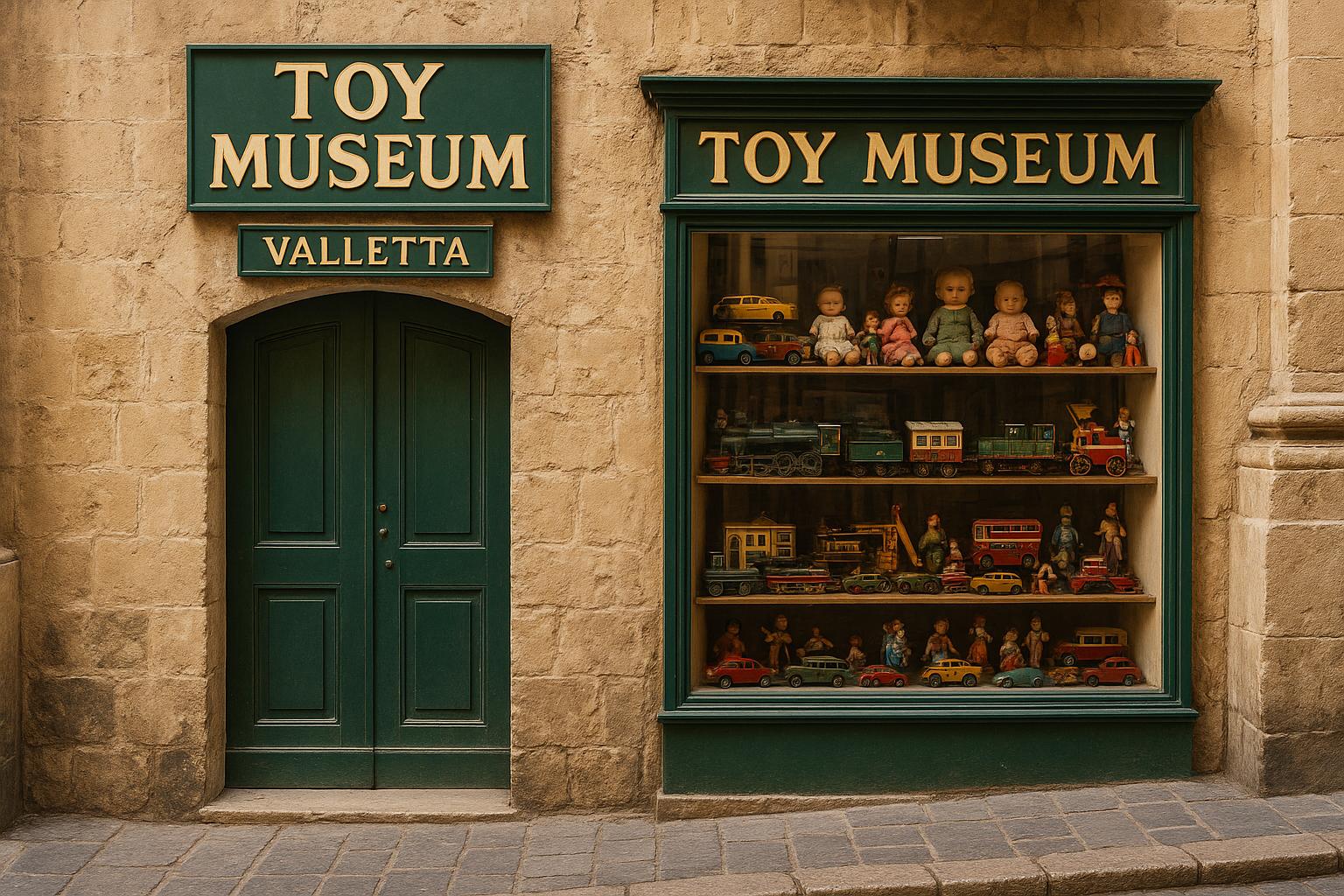The Toy Museum in Valletta
The Toy Museum, situated at the heart of Valletta, Malta, is a remarkable institution that encapsulates the charm and essence of childhood through its vast array of vintage toys. Since its inception in the mid-20th century, the museum has grown to become a revered depository of childhood memories as well as the iconic toys which have come to represent various eras of play.
History and Establishment
Curated and founded by Vincent Brown in the early 1990s, the Toy Museum came into being through a combination of personal passion and public sharing. Initially, Brown’s interest in collecting toys was a private endeavor. However, as the collection flourished beyond expectations, the vision of sharing this treasure trove with the public took shape. The museum is housed in a beautifully restored building on Republic Street, a location known for its cultural importance and its historic architecture.
Republic Street itself is a reflection of Malta’s rich history, making it the perfect home for a museum dedicated to preserving the history of toys. Visitors to this area are not only welcomed by the charm of the past but are also treated to a deep dive into the world of nostalgia that the toys exhibit.
Collection Highlights
The museum’s displays are a testament to the evolution of playthings from the 1950s through to the 1980s, marking distinct moments in toy manufacturing history:
Dolls and Dollhouses: The assortment of dolls in the museum is noteworthy. Ranging from handmade porcelain dolls—crafted with exquisite detail—to the mid-century plastic models that marked a revolution in toy production, these dolls represent shifts in material use and aesthetic trends. The dollhouses, furnished intricately with miniature replicas of domestic life, help visitors understand the set-up of play environments from yesteryears.
Model Trains: As a central part of the exhibition, model trains run through the museum’s impressive layouts. These miniature railways attract enthusiasts across generations for their detail and design. The model trains also chronicle the progression of toy-making technology, demonstrating how electric train sets gradually replaced their wind-up predecessors.
Tin Toys: The collection of tin toys showcases a period when such materials were at the forefront of toy-making. These toys not only symbolize the playful spirit of the early 20th century but also highlight the craftsmanship involved in their making. Their construction offers insights into the industrial design tendencies of that era, reflecting both artistic and technological advancements.
Educational and Cultural Significance
Beyond serving as a nostalgic retreat, the Toy Museum is an invaluable educational resource. It offers a platform to understand how toys have mirrored societal changes, technological progress, and shifts in cultural paradigms. By organizing educational tours and workshops, especially for schools, the museum emphasizes the historical backdrop and manufacturing nuances of these treasured possessions.
Such educational endeavors are integral in providing a holistic view of how the concept and utility of toys have evolved over the years. Workshops might, for example, delve into the history of toy manufacturing processes, comparing handmade workmanship to modern mechanized techniques, thereby facilitating a narrative on human innovation and adaptation.
Additionally, the museum serves as a cultural touchpoint, offering insights not only into the technological aspects of toy-making but also into the social roles these toys have played across different periods. From embodying cultural values to acting as tools for cognitive development, the significance of toys extends far beyond mere amusement.
Visiting Information
The Toy Museum’s central location in Valletta ensures it is both convenient and accessible to locals and tourists alike. Open throughout the week, the museum’s hours may vary according to the season, making it essential for potential visitors to check current timings prior to planning their visit. Given its positioning in a touristic hub, the museum nests comfortably within a day’s exploration of Valletta’s other historic and architectural offerings.
For those keen to learn more about visiting the Toy Museum, Visit Malta’s official tourism website provides comprehensive details on entry timings, fee structures, and special events that the museum may be hosting.
In conclusion, the Toy Museum in Valletta presents an enriching experience for those looking to traverse the historical timeline of children’s playthings. Its exceptionally curated exhibitions offer a singular vantage into the cultural and historical narratives woven into the fabric of toy evolution. Operating both as an educational foundation and a source of entertainment, the museum invites all to immerse themselves in the playful wonders of the past while drawing connections to the present. This dual role helps the museum maintain its relevance, ensuring that it remains a cherished part of Valletta’s cultural landscape for generations to come.

